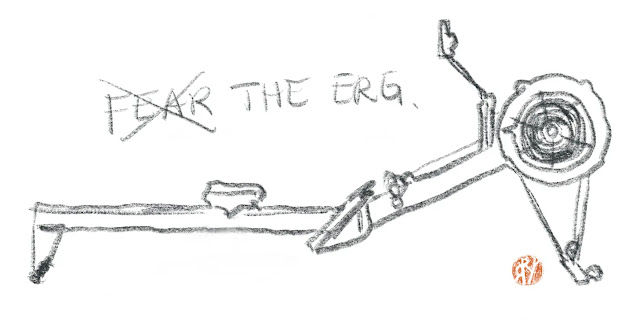Op-Ed: Does USRowing Need a(nother?) High Performance Director?
 |
| London was a wild ride. Now what? (Photo: © B. Kitch) |
First, while McLaren did well to medal in what was an extremely competitive event at Eton Dorney, clearly, there were larger issues at play given the performance of the U.S. men's team over the past four years. The total medal tally from 2009-2012 was three – a gold medal in the coxed pair in Poznan in 2009 (Troy Kepper and Henrik Rummel – there's that man again), a silver in the lightweight men's eight also in Poznan (though that crew was coached by John Parker), and a bronze in the men's four London. In the midst of the quadrennium, McLaren decided to make some fundamental changes to the structure of the men's squad, moving the training center away from Princeton and spreading it between Oklahoma City and San Diego. While this initially weakened the team, the addition of a third training center and coach in Mike Teti at CRC gave USRowing the strongest hand it could have hoped for in London. Though McLaren was the head coach, it was largely in title only, as he worked with a small number of athletes in one of three training centers, with Teti and Bryan Volpenhein at the helm in Oakland and OKC, respectively. And, the results were solid. The men were 0.3 seconds away from two medals – a feat that they hadn't accomplished since 1996.
How'd they do it? The re-involvement of Mike Teti made it possible for McLaren to focus primarily on one boat – the four. Coaching a single crew to outstanding results has always been McLaren's strong suit, though, from what I am told, he makes an effort to coach everyone equally. All the more reason, then, for McLaren to handle a smaller group, allowing him to work more intensely with the individuals and produce a podium finish. However, this is not the job description of the head coach. Teti is ultra-familiar with U.S. collegiate rowing, and has always been able to take a large group of athletes and select a crew that is competitive from that athlete pool. Has he been exactly right every time? No. No one has. But his crews have consistently excelled on the world stage, at both the under-23 and elite levels. Not only is Teti a good coach of an individual crew, he is also an excellent team manager. And, he shares all of these qualities with USRowing women's head coach, Tom Terhaar.
Terhaar will be back, and USRowing is suitably glad of it. The U.S. women's team has had unprecedented success under Terhaar, and there is no reason to expect otherwise over the next quadrennium. Terhaar brings together all of the necessary qualities to run a successful program, and has done well to communicate and integrate with the under-23 and junior national team programs so that athletes and coaches are on the same page as athletes develop and mature into senior level racers.
The announcement that Curtis Jordan would become the USRowing High Performance Director, then, must apply to the men's side. What can Jordan do to improve the U.S. women's team, which is already the most successful rowing team in the world, other than simply provide necessary support to Terhaar and his crews? The real job for Jordan, it seems, is to find an equivalent of Terhaar for the U.S. men's team. While Teti will likely be willing to help whenever needed, he is unlikely to leave his position at Cal to return to the U.S. team full time. Still, whether or not Jordan can recruit and install a men's head coach in the style of Terhaar will determine whether or not USRowing's decision to hire a High Performance Director was a mistake. There are only so many six-figure salaries to go around, and so far, USRowing has hired Jordan, an experienced and successful coach at both the collegiate and international levels, to do no coaching. Let's hope that Jordan is every bit the recruiter that he is a coach, so that the U.S. men can continue to build for Rio. Because, the fact is, if there were an equivalent to Terhaar on the men's side, Jordan's new position would likely never have been created.
This, then, begs the question, 'Who is out there?' There are certainly a number of talented candidates – I'm sure we all have our short lists. However, I can't help asking myself a follow-up question – 'Why didn't USRowing simply hire Curtis Jordan as the new men's coach?' Perhaps it's not a role he wanted, but one could easily make an argument for Jordan as a strong candidate for head coach on the men's side. As it stands, the U.S. men are leaderless – if not Jordan, then who? Further, is Jordan going to hire a series of individual boat coaches on the men's side, while leaving the women's side the same? Would the system function given such incongruity? If it works one way on the women's side, why can't it work the same way for the men?
Afternoon update: A reader pointed this out after we published the above article, but USRowing has yet to address Matt Imes' continuing role as High Performance Director. Will he continue? If so, what would be the reason for keeping two HPDs onboard at the same time? Why does USRowing continue to create six-figure salaried positions for administrators rather than coaches?
There are so many questions. Let's just hope we don't spend the rest of the next quadrennium looking for answers.
-RR



